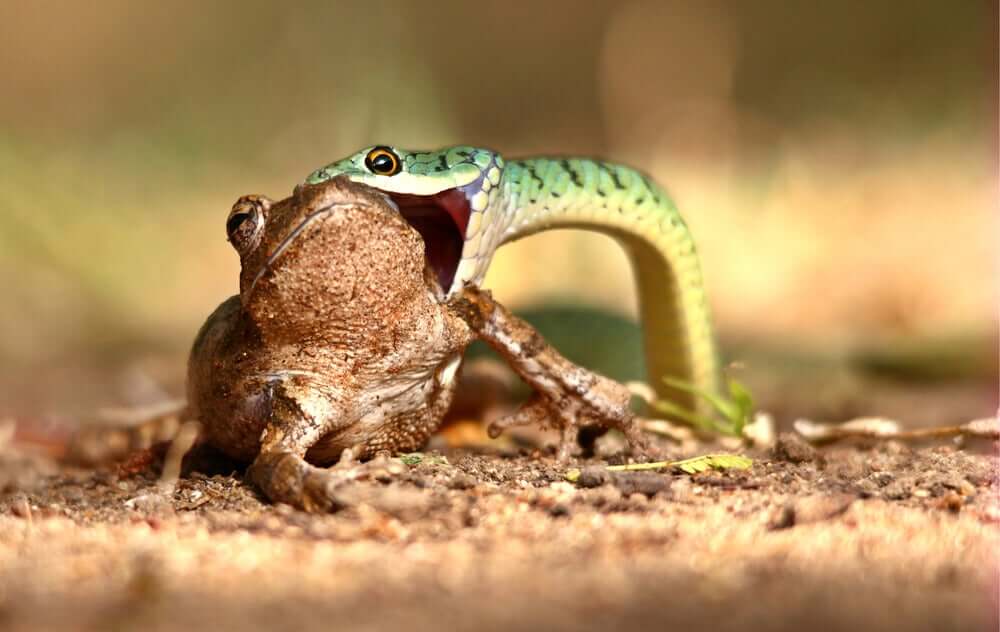Considerations Before Having a Reptile as a Pet


Written and verified by biochemistry Luz Eduviges Thomas-Romero
Before deciding to have a reptile as a pet, it’s important to understand exactly what the specific needs of these animals are. Having a reptile is very different than having a cat, a dog, or any other mammal as a pet. Therefore, what may seem like “common sense” with other pets is useless when it comes to caring for reptiles.
Therefore, it’s crucial that you understand that the behavior and needs of reptiles are so different than our own that keeping them alive can be very difficult for beginners.
Before committing to a reptile as a pet, you must make sure you’re really prepared to provide adequate care. It’s also important to purchase it from an accredited vendor. Here are some tasks you should consider before bringing a reptile into your home.
Finding veterinary care for your reptile
It’s important to know that all reptiles fall into the category of exotic pets. For this reason, they’re not animals that your local veterinary clinic is going to see on a regular basis.
Preparing a good home for your pet
The animal’s habitat is not the same thing as a cage. While you may want to have a cage for transporting your pet, a habitat will be your pet’s home. Cages merely keep animals from running around your home. Habitats, on the other hand, contain all your pet needs to survive. In other words, it should provide food, water, refuge, a heat source, and some sort of “landscaping”.

Heat and humidity requirements
Reptiles are cold-blooded animals. Therefore, most of them will require some source of heat within their habitat. This may be a heat lamp, for example.
Make sure that your heat source is set to the right temperature for whatever reptile you plan on having. What’s more, keep in mind that you may need to adjust the temperature according to the time of year. In addition, you will need to find out how much humidity your pet requires. In the same way, you need to obtain the complementary equipment before you bring your reptile home.
Prevent the risk of the spread of illnesses
In many areas, it’s illegal to have venomous reptiles as pets while in other areas or countries you must acquire a permit. Whether or not it’s legal where you live, you need to understand that reptiles can spread illnesses to other reptiles as well as humans.
The transmission of bacterial pathogens such as salmonella is quite common. Therefore, it’s very important to practice proper hygiene in order to care for your pet as well as your family.
Acquiring basic knowledge about reptile biology
In nature, many reptiles and amphibians go through a process of brumation–a type of hibernation induced by colder climates. This process is closely related to survival in adverse conditions.
If you plan on using your pet reptile for reproduction, specialists often recommend inducing hibernation. Handling hibernation in your home can be challenging and complex. With this in mind, it’s important to have basic knowledge of your pet’s biology.
Understanding the feeding habits of your reptile
This is a crucial point for first-time reptile owners. Reptiles have very specific requirements when it comes to their diets and eating habits. And not all human beings find this issue pleasant to deal with.

So, owning a reptile as a pet means keeping other small animals alive that you can feed to your pet. You should make them nutritious by giving them protein powder. Finally, you’ll also need to clean up the cadavers. This is an unavoidable part of owning a reptile as a pet.
Make sure you obtain a trustworthy source of good quality prey to feed to your reptile. What’s more, educate yourself on exactly how much and how often your particular species eats. There’s no one size fits all rule when it comes to feeding reptiles because every species is unique.
It’s interesting to know that, in captivity, most snakes will be happy with rats and mice. Other species, such as lizards, eat insects. However, bearded dragons not only eat insects but fruits and vegetables as well. There are also some green iguana species that are strictly herbivores.
All cited sources were thoroughly reviewed by our team to ensure their quality, reliability, currency, and validity. The bibliography of this article was considered reliable and of academic or scientific accuracy.
- Warwick, C., Lambiris, A. J., Westwood, D., & Steedman, C. (2001). Reptile-related salmonellosis. Journal of the Royal Society of Medicine, 94(3), 124-126.
- Warwick, C., Arena, P., Lindley, S., Jessop, M., & Steedman, C. (2013). Assessing reptile welfare using behavioural criteria. In Practice, 35(3), 123-131.
This text is provided for informational purposes only and does not replace consultation with a professional. If in doubt, consult your specialist.